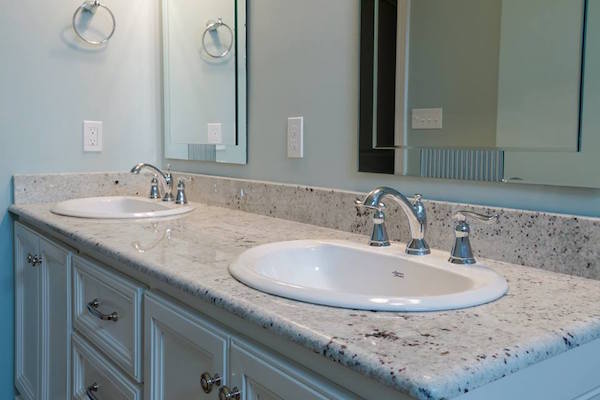Install Formica Walls
Posted : adminOn 6/7/2018
Remove old kitchen counters and install new laminate. Install a Laminate Kitchen Countertop. But if your walls deviate by more than 1/4 in. Install Tile Over Laminate Countertop and Backsplash. Easily install a limestone and glass tile wall using these step-by-step instructions.

Remove the stove from the kitchen by taking out the bottom drawer and placing the feet on top of a blanket so you will not scratch the floor. Move it out of the kitchen entirely (if possible). To remove the kitchen sink, turn off all the water supply lines.
Bleed the faucet lines. Unscrew the sink lines from the supply lines (Image 1) and then remove the drain line from the garbage disposal. Unscrew the garbage disposal flange (Image 2) and unscrew the drain from the sink. Remove the sink fasteners holding the sink in place, and then just lift the sink out.
Cut away the caulk line along the back of the laminate backsplash. Vienna Secession Font more. Use a reciprocating saw to cut the existing laminate backsplash off the countertop (Image 3). The key is not to leave any edge sticking up.
Remove any outlet covers. Lord Of The Rings Program Notes there. To prep the countertop to receive the tile, round corners need to be squared off and the countertop surface has to be sanded to provide a better surface for the tile adhesive. To square off the corners of the round-cornered laminate countertop, mark a line 3-1/4” in from edge. Clamp the level down to use as a cutting guide (Image 1). Cut off the end of the counter with a circular saw (Image 2).
To build up a square end to set tile on, you may need to screw a piece of trim (cut to the thickness of the counter) onto the trimmed counter edge (Image 3). Check for good stability on the countertops. Anywhere the countertop moves or gives way – like the thin lip in front of the sink -- install a brace or support piece and secure it in place (Image 4). Countertop laminates are typically made from nonporous materials. Image Converter To Icon V1.0 there.
In order to make thin-set adhere to that surface, make the laminate more porous by using an electric sander to sand its surface. Use a palm sander or an orbital sander with a 50-grit paper to rough up – without gouging -- the existing laminate countertop (Image 5). This creates more texture on the surface and promotes a better bond for the thin-set adhesive. Tile around the sink area first. Lay out a few tiles without adhesive. Determine your starting point by starting at the edge of the counter, leaving room for the edge tiles, and placing tiles back toward the backsplash until you end with the last whole tile close to the backsplash.
Mark that point. Draw a line representing the row of whole tiles closest to the backsplash. Draw perpendicular lines representing the rows of tiles (Image 1). Do the same thing from the sink side of the countertop. Where those two points intersect is where angle cuts are needed.
You will be transferring these angled lines to the tiles. Lay whole tiles out along the marks. An easy way to mark the tiles is to use a straightedge to line up with your mark on the countertop and strike a line across the tiles (Image 2). Use a wet saw to cut along the marks (Image 3).
Once your tile layout for a corner has been determined, precut those tiles and then check your cuts to see if they match your layout. If not, there is still plenty of time to get it right. Use a latex modified thin-set adhesive for this type of application. With the trowel, lay out a thin scratch coat along the counter (Image 4), being careful to keep the lines visible for now. Begin setting the tiles at the left side of the intersecting (Image 5) line. With the tiles set to the left of the line you are now able to marry the tiles to the right of the angle (Image 6).
Using spacers in the grout joints of a tile layout helps ensure consistency throughout the entire job. Set the whole tiles and make necessary cuts as needed. Work your way to the opposite corner to the right of the sink. The rest of the counter should consist mostly of whole tiles. When you have a straight area to cover, you can spread out the thin-set over the entire area at once. Use the comb edge of the trowel to create grooves in the mortar that run in the same direction (Image 7). Lay the rest of the tiles.
It is important to set the tile into position and slide it into place by gently pushing it in the opposite direction than the notches are running. Repeat the process by adding spacers in the corners and between the tiles along the sides. This will ensure consistency in the width of the grout joints. Due to the rounded (half-bullnose) edges of the countertop, place 1/8” x 2” shims underneath the tiles along the perimeter of the countertop (Image 8). This will allow for a slightly thicker layer of adhesive to be laid under the counter edge tile.
When you install the edge tiles (Image 9) be sure and fill all voids between the tile and the laminate with mortar. The shims keep the edges from moving once you set them in place. Once the thin-set cures, the edge pieces will not be going anywhere.